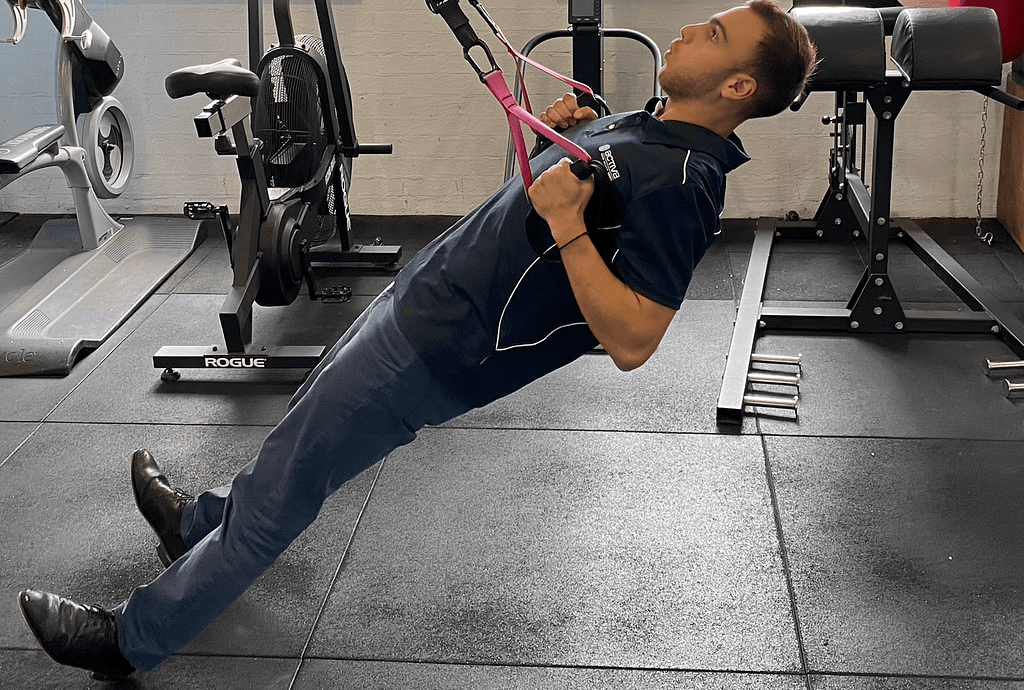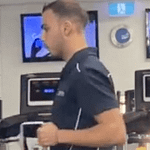Horizontal Pull: A Fundamental Movement Pattern
Exercises that are critical for shoulder integrity, strength and postural support

The horizontal pull is a key movement pattern that involves moving or pulling a weight towards your chest/torso, and rowing-based movements, such as seated rows and utilising the TRX. The horizontal pull movement is a vital component of strength training that targets the upper back and shoulder muscles. This movement is extremely versatile and can be completed in a variety of ways, allowing for flexibility based on your goals and available resources, offering options for every fitness level and preference.
Incorporating horizontal pull exercises into your routine is key to developing a balanced upper body, improving posture, and enhancing functional strength. Whether you choose free weights, cables, or bodyweight variations, the horizontal pull movement is an essential addition to any well-rounded strength training program. The primary muscles engaged during the horizontal pull involve the latissimus dorsi (lats), rhomboids, trapezius and rear deltoids, as well as your forearm and core muscles.
As with all exercises, it is critical to gradually build up to the more challenging exercises to ensure safety is maintained. Within this blog, included are some exercise progressions and regressions for you to work through. Additionally, this movement can be further progressed, which will be discussed in future blogs.
What’s better out of seated vs standing pulls?

Both seated and standing horizontal pulls have various associated benefits, but the choice between the two should align with your goals and any individual considerations you may have. During a seated horizontal pull, you have more stability and isolation of the required muscles to perform the action. Oppositely, standing pulls allow for more variety in movements, as well as greater functional strength benefits due to their ability to mimic movements of our everyday lives. In essence, both seated and standing pulls have great benefits, but training goals, individual considerations, and exercise experience should shape what’s best for you.
Is single-arm pulling more beneficial than double-arm?

Essentially, both single and double-arm horizontal pulls are extremely beneficial, but their effectiveness is determined by each individual’s training goals and circumstances. It is thought that single-arm pulling is more beneficial due to the isolated targeting of one arm, which can help identify imbalances and reduce discrepancies, as well as hold value in building functional strength. This is due to the necessity of one-hand or arm movements we perform during everyday life. Otherwise, double-arm exercises hold benefits in exercise efficiency due to the ability to shift heavier loads, but prioritising single over double should be determined by your individual goals and personal circumstances.
Can I use a TRX for horizontal pulling exercises?

Absolutely! Utilising the TRX is a great way to perform a horizontal pull movement. Not only does it allow for a wide variety of different exercises, but it serves as a challenge too. Due to the suspensions not being firmly fixated, activation of surrounding muscles, particularly your core, is required to stabilise yourself as you travel through the movement. Alternatively, the angle at which you situate yourself can make the movement easier or more challenging for you.
What are some horizontal pull exercises?

During the movement of a horizontal pull, a wide range of exercises can be performed to achieve activation of required muscle groups. Below is a list of horizontal pull exercises in order of least to most challenging. Within this list, exercise difficulty can continue to vary depending on factors such as the angle the movement is performed at, as well as the hand grip used. Choosing exercises that match your current fitness level is imperative to progressively challenge yourself whilst ensuring safety is maintained.
1. Seated Row (Double Arm / Single Arm)
2. Standing Cable Row (Double Arm / Single Arm)
3. Double-Arm TRX Row (120°)
4. Bench-Supported Single Arm Dumbbell Row
5. Double-Arm TRX Row (90°)
6. Bent-Over Barbell Row
This movement can be further progressed, which we will discuss in future blogs!
How does your hand grip change the difficulty of a horizontal pull?
Not only can the horizontal pull movement be made more difficult by changing the type of exercise completed, weight moved and the range you’re moving through, but also the hand grip you have whilst completing it. This is because it alters the muscles that are primarily engaged. The three main types of hand grips include (from easiest to hardest):
- Supinated (underhand)
- Neutral (facing inwards)
- Pronated (overhand)
Although the grip utilised may change the difficulty of the exercise, does not mean the benefits associated decline. During a supinated grip, there is greater emphasis on the biceps and less demand on the lats and upper back. With this, there is greater engagement of different muscle groups to help with the movement. For a neutral grip, there is a balance between overhand and underhand grips. This can promote better stability during the movement, allowing for more comfort when being performed. Finally, the pronated grip is most challenging as the range of motion during the movement is generally longer compared to others, whilst only engaging your lats and upper back muscles.
Importantly, the choice of grip should align with your specific goals and training preferences. As you move through your training, utilising different grips and exercises can provide variety and target specific areas of your upper body. Ultimately, the perceived difficulty of an exercise can vary based on factors of strength and experience.
What are some progressive exercises associated with the horizontal pull?
As with all exercises, it is critical that you gradually build up to these more challenging exercises to ensure safety is maintained.
We have provided a safe exercise progression below with video demonstrations of each to help you.

If you have any further questions, please contact us anytime.
NOTE: This exercise can be further progressed, which we will review in further blogs so stay tuned!
Seated Row (Double Arm / Single Arm)
Standing Cable Row (Double Arm / Single Arm)
Double-Arm TRX Row (120°)
Bench-Supported Single Arm Dumbbell Row
Double-Arm TRX Row (90°)
Bent-Over Barbell Row
Conclusion
The horizontal pull movement is an extremely fundamental and versatile movement that is critical to add to your training regime. It is a great way to step up your upper body training and achieve some wonderful results.
The Bent-Over Row is a great advanced exercise that should be built up to and introduced once conditioned appropriately. Gradually work towards this by following the progressive exercises explored throughout this blog!
If you need further guidance, please reach out to us and take advantage of a free 15-minute telehealth consultation with our exercise physiologist.
Written by Paolo Mitry, an Exercise Physiologist at Activ8 Health Club




































